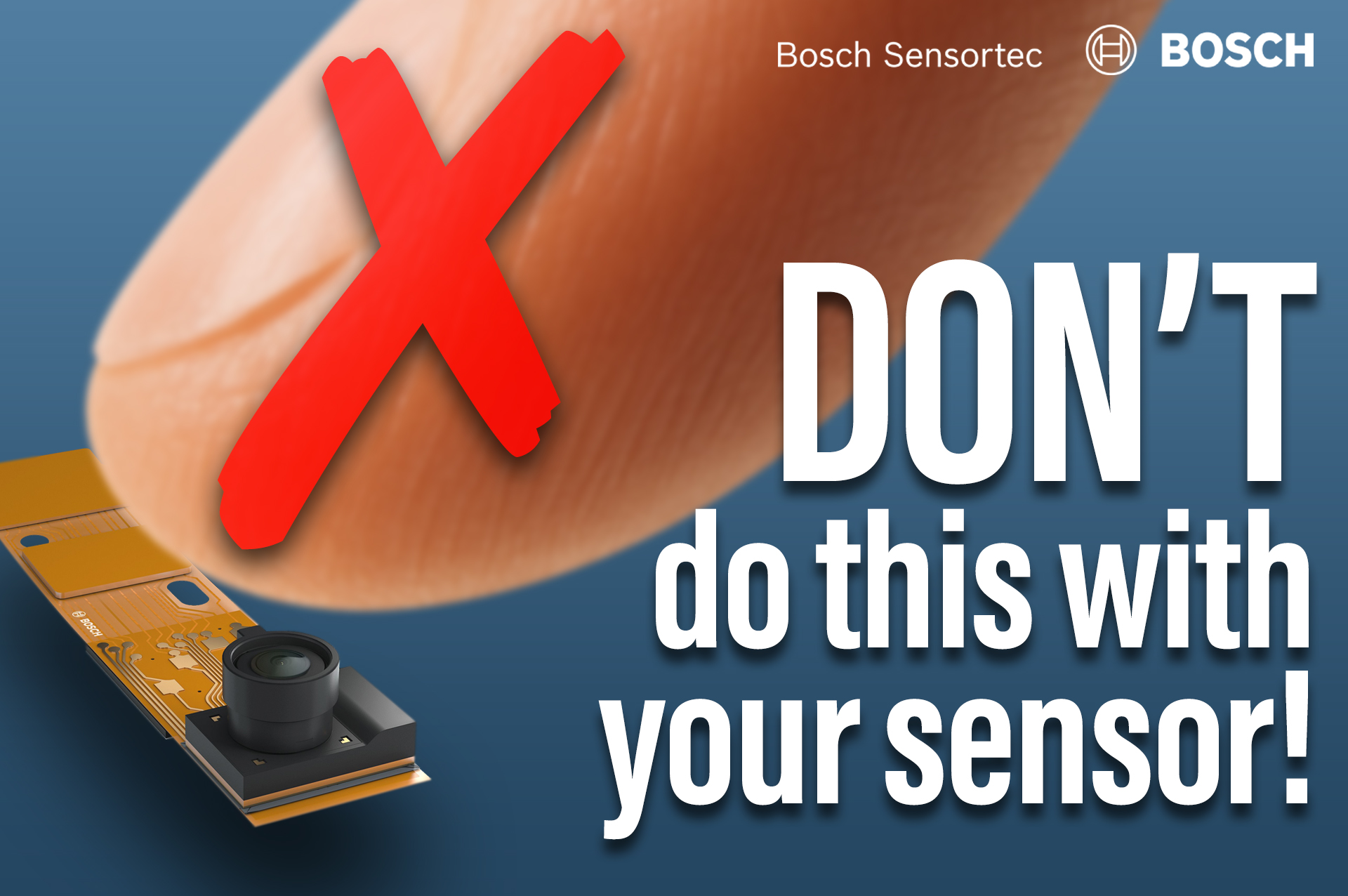Products
Solutions
Published
30 May 2025
Written by Luke Forster
It’s not just about the code—physically mishandling the board could be just as damaging.
Bosch Sensortec’s BMV080 is a marvel of modern sensor tech. It’s the world’s smallest PM2.5 device, it runs laser-based particulate detection internally, and it’s designed for consumer applications. But during integration, engineers commonly make two key mistakes: ignoring the software stack, or physically mishandling the board.
Here’s how to avoid both.
Don’t Touch the Board
Let’s start with the physical side. The BMV080 shuttle board is designed for fast evaluation—but that doesn’t mean it’s invincible.
Touching the sensor lens or board contacts with bare fingers risks introducing contaminants, electrical discharge, or oils that affect the optical window. The result? Inaccurate measurements, performance drift, or sensor damage.
Handle the board by its edges. Avoid contact with the sensor enclosure or the photodiode aperture. And make sure your final design shields the sensor from both human contact and environmental contaminants.
Software You Shouldn’t Skip
The BMV080 is unique in that it pre-processes data internally. You’re not expected to run particle detection algorithms on your MCU—the sensor gives you preconditioned PM1 and PM2.5 outputs via Bosch’s SDK.
This SDK communicates over I²C or SPI and already supports major embedded platforms including:
- ARM Cortex-M0+, M4, M33
- ESP32
- Raspberry Pi
- Windows (for development)
This means engineers can focus on implementation, not low-level sensor calibration or signal filtering.
The Shuttle Board Advantage
Bosch offers a plug-and-play shuttle board that connects directly to their application boards or your own hardware. These boards enable rapid prototyping, complete with evaluation software, firmware examples on GitHub, and ready-to-go host support.
Want to test real PM2.5 readings in minutes? This is the fastest path to proof of concept.
Conclusion
Integration doesn’t start with code—it starts with handling. Avoid touching the sensor. Use the SDK. Follow Bosch’s platform recommendations. Whether you’re prototyping wearables, indoor monitors, or smart home tech, this approach keeps your integration fast and fail-proof.
Ready to evaluate or need more technical information? Click here.
Comments are closed.

Comments
No comments yet